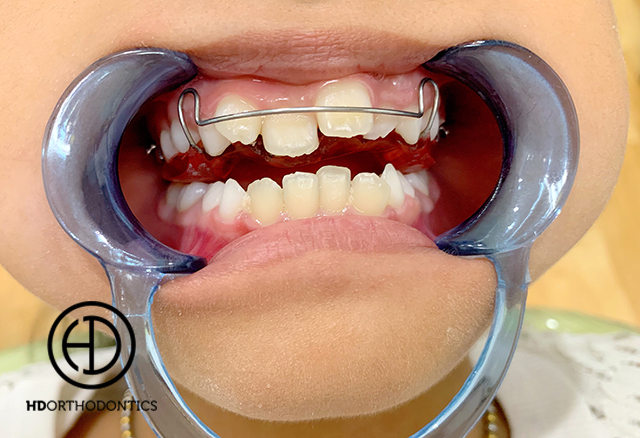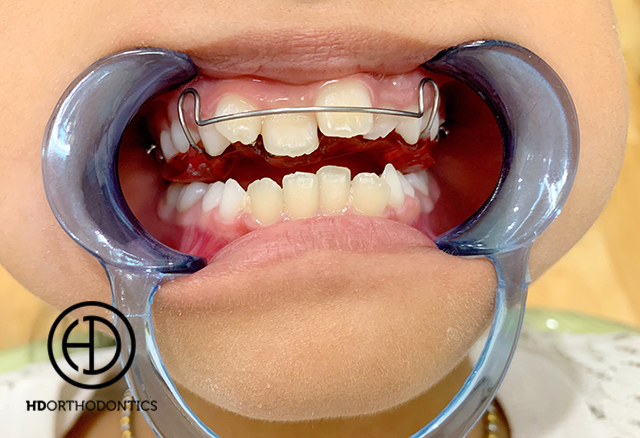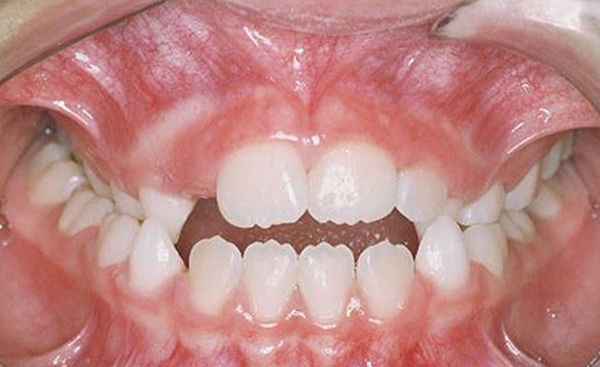What is a Crossbite and How Can it Be Corrected?


Long Beach, CA – A crossbite is one of the types of malocclusions, or teeth misalignments, that is often corrected by orthodontists. It is characterized by upper teeth that fit inside the lower teeth. In a properly aligned bite, the upper archform should be wider and lay on the outside of the bottom teeth. I like to explain it as the top teeth acting like an umbrella protecting the lower teeth. A crossbite can affect a single tooth or groups of teeth, and it can involve either the front teeth, back teeth, or both.
In a posterior crossbite, the back teeth are affected. The upper molars and premolars will fit inside the back bottom teeth.

In an anterior crossbite, one or more of the top front teeth sit behind the lower front teeth. An anterior crossbite differs from an underbite in that with an underbite, all of the front teeth are in crossbite, not just one or two teeth.

There are several things that can cause a crossbite. For some people it is just simply genetics resulting in a smaller upper jaw. For others, it could be caused by a delay in the loss of their baby teeth or abnormally erupting permanent teeth. Habits, such as thumb/finger sucking or abnormal swallowing, are another very common cause of crossbites, as they result in constriction or narrowing of the upper jaw.
It is important to correct a crossbite because it is typically caused by an underlying jaw issue. If not corrected, this can lead to more serious issues over time, including shifting of the jaw, asymmetric jaw growth, and TMJ symptoms. Patients with crossbites can experience jaw, neck and shoulder pain from the abnormal pressure placed on the jaw. Crossbites can also increase your risk of dental issues, such as gum disease, decay and abnormal tooth wear.
Treatment for crossbites most often requires expansion of the palate. Using an appliance called a palatal expander, the upper jaw will slowly be widened to create the ideal arch width and room for the teeth. Then, once the jaw has reached its ideal width, braces or clear aligners will be used to guide the teeth to their proper locations.
Crossbites are most effectively treated in children, when we can guide the growth of the jaw that is still developing. The upper jaw is 90% developed by age 10, and as the maxillary bone matures, the bony suture between the palatal bones fuses over time. Once the suture has fully fused, treatment with a palatal expander is no longer effective. This is one of the reasons why the American Association of Orthodontists recommends seven as the ideal age to visit an orthodontist for the first time. If a narrow maxilla and/or posterior crossbite is diagnosed at an early age, treatment with an expander is an easy fix. Treatment can still occur at any age, but as an adult, the only way to open the palatal suture and expand the upper jaw is with jaw surgery.
If you or your child suffer from a crossbite, call HD Orthodontics today to learn more about treatments that may be available to correct it and have you on the path to a healthier smile, 562-283-6590.

